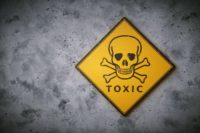 The five-year-old Prevention through Design (PtD) initiative is picking up speed and may pick up some new partners as well, according to NIOSH chief Dr. John Howard. In a recent statement. Howard hailed the idea -- of designing for worker safety and health up front -- as a wise investment that will pay for itself "many times over."
The five-year-old Prevention through Design (PtD) initiative is picking up speed and may pick up some new partners as well, according to NIOSH chief Dr. John Howard. In a recent statement. Howard hailed the idea -- of designing for worker safety and health up front -- as a wise investment that will pay for itself "many times over."
PtD embodies the concept of reducing the risk of work-related injuries and illnesses by designing out hazards and minimizing occupational risks throughout the life cycle of work premises, equipment, tools, processes, and products, including their construction, manufacture, use, maintenance, and ultimate disposal or reuse. PtD emphasizes the importance of giving prospective attention to safety and health before blueprints are drawn, a much wiser and much preferred alternative to the time and cost of retroactively correcting a problem, or even worse, to dealing with the consequences once an injury, illness, or death occurs in the workplace.
Howard noted three developments that illustrate that illustrate the power of PtD as a model for improving occupational safety and health in the 21st century:
•The American Society of Safety Engineers approved a professional standard for including PtD concepts within an occupational safety and health management system. The consensus standard, American National Standards Institute (ANSI)/ASSE Standard Z590.3, "Prevention through Design: Guidelines for Addressing Occupational Risks in Design and Redesign Processes," can be applied in any occupational setting.
"Development and publication of this standard was a major goal for NIOSH and partners in the PtD national initiative, since ANSI standards are widely consulted and used as technical templates and guides for safety and health programs and interventions," said Howard. Additional details are available at: http://www.cdc.gov/niosh/blog/nsb092211_ptd.html.
•NIOSH and its partners convened a national conference, PtD: A Report on the National Initiative, on August 22–24 in Washington, DC. Plenary and break-out sessions addressed research, practice, education, and policy issues in PtD and featured presentations by diverse leaders in the industry, labor, and research communities. "The conference presented an opportunity at the five-year mark to revisit the goals of PtD, assess the progress made since the first national workshop was held in 2007, and identify ongoing needs," said Howard.
• A synopsis of the December 2009 conference on Safe Green Jobs is now available from NIOSH. "The Summary of the Making Green Jobs Safe Workshop" synopsizes the presentations and deliberations from the gathering, which was cosponsored by NIOSH, the Environmental Protection Agency, the National Institute of Environmental Health Sciences, and the National Toxicology Program.
"PtD is a vital concept for America’s "green" industries," said Howard. "As we look to the economic and environmental benefits of developing and using cleaner energy sources and industrial processes, we must ensure that those processes are safe and healthful for the men and women who work in them. This initiative reaffirms the historic ties between the environmental, health, and safety movements that led to cleaner air, cleaner water, and safer workplaces in the last quarter of the 20th century. Looking forward, it advances PtD as a foundational principle for the new industries that will help us to reboot our economy and maintain U.S. leadership in the global markets of the 21st century. The document is available at www.cdc.gov/niosh/docs/2011-201/.
NIOSH’s current partners in crafting and advancing this national initiative are the American Industrial Hygiene Association, the American Society of Safety Engineers, CPWR-the Center for Construction Research and Training, Kaiser Permanente, Liberty Mutual, the National Safety Council, the Occupational Safety and Health Administration, ORC Worldwide, and the Regenstrief Center for Healthcare Engineering. Howard said additional partners would be welcome.
More information is available on the PtD topic page at http://www.cdc.gov/niosh/topics/PtD/



